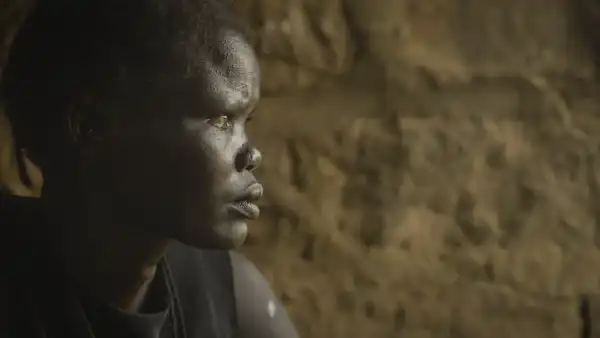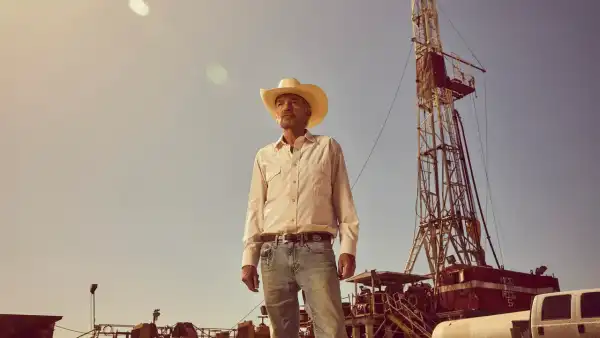
Save this storySave this storySave this storySave this story
View “Rovina’s Choice.”
It was January, my concluding week within the departing Administration. In just a few days, Donald Trump would be sworn in as President. I had joined the United States Agency for International Development at the beginning of 2022, relinquishing my surgical practice and community-health studies in Boston to oversee the organization’s worldwide-health initiatives. Now I’d be going back to my prior existence.
I dedicated my closing days at U.S.A.I.D. in gatherings with our governmental and international-service heads, expressing my gratitude. Their endeavors with allied nations had been instrumental in suppressing twenty-one occurrences of lethal illness, sustaining the Ukrainian medical infrastructure subsequent to Russia’s incursion, battling H.I.V., tuberculosis, and polio, and lessening maternal and infantile mortalities globally. Utilizing a budget of merely twenty-four dollars per U.S. citizen—from the fifteen thousand dollars in taxes remitted per individual last year—they had rescued lives on an almost unfathomable dimension. An autonomous, academically assessed review in The Lancet approximated that U.S.A.I.D. assistance had protected ninety-two million existences over two decades.
The New Yorker Documentary
Watch the most recent film or put forward your own.

A lot of the leaders articulated anxiety regarding what the approaching Administration might introduce, but I exuded an optimistic sentiment. U.S.A.I.D., I indicated, had more than sixty years of consistent bipartisan endorsement. Trump had furthered noteworthy segments of the agency’s work in his initial term. He had individually vowed to eradicate H.I.V. as a community-health menace by 2030. The incoming Secretary of State, Marco Rubio, had been an articulate advocate of the department. There would be sporadic partisan clashes—over diversity programs, abortion-linked policies, and similar matters—but more than ninety-five per cent of our bureau’s work had never been in dispute.
Evidently, I was lacking in foresight. Within hours of being instated, President Trump authorized an executive directive for a “pause” to all foreign aid. Secretary Rubio dispatched a message suspending every initiative outright. No program staff could be compensated. No services could be rendered. Pharmaceuticals and sustenance already obtainable could not be utilized. No forewarning had been conveyed to the administrations that depended on them. It was instantly apparent that hundreds of thousands of individuals would perish in the initial year alone. But the Administration did not reconsider; it intensified. Elon Musk rejoiced in wielding his chainsaw. Within weeks and in defiance of legitimate commands, he and Rubio eliminated U.S.A.I.D.’s staff, terminated more than four-fifths of its agreements, seized its resources, and disassembled the agency. Neither Congress nor the Supreme Court did anything to impede it.
We are currently observing what the historian Richard Rhodes termed “public man-made death,” which, he remarked, has been conceivably the most overlooked origin of mortality in the past century. Brooke Nichols, the Boston University epidemiologist and mathematical modeler, has upheld a respected monitor of present repercussions. The model is cautious, presuming, for instance, that the State Department will thoroughly uphold the initiatives that persist. As of November 5th, it approximated that U.S.A.I.D.’s demolition has already precipitated the demises of six hundred thousand individuals, two-thirds of them minors.
The cost is horrifying and will proceed to escalate. But these forfeits will be tougher to perceive than those of warfare. For one, they unfold gradually. When H.I.V. or tuberculosis goes unexamined, unprevented, or inadequately attended to, months or years can elapse before a person succumbs. The same holds true for mortalities from vaccine-preventable ailments. Another impediment is that the demises are dispersed. Suppose the abrupt cessation of assistance elevates a country’s under-five mortality rate from three per cent to four per cent. That would be a one-third augmentation in deaths, but challenging to grasp simply by glancing around.
The Administration, for its allocation, has refuted causing widespread detriment, even as it has rendered the dimension of the damage tougher to evaluate—halting data observation and dismissing the inspectors general who might have recorded it. This is typical in instances of public man-made death. During Mao Zedong’s disastrous Great Leap Forward, from 1958 to 1961, the Chinese government issued no precise mortality data. Observers internationally comprehended that a hunger crisis was developing when China commenced importing grain, but the magnitude of the catastrophe was not recognized until the mid-nineteen-eighties, when the initial trustworthy census permitted historians to compute that between twenty-three and thirty million individuals had expired.
A more complete assessment of the repercussions from U.S.A.I.D.’s cessation will probably have to await scrutiny of the United Nations’ 2025 mortality figures, which likely won’t surface until 2027. But there are alternate avenues to perceive the scope of the damage. With a documentary squad that encompasses both American and local journalists, I have been pursuing what has transpired in Kenyan communities where U.S.A.I.D. had been engaged—in an advanced-H.I.V. ward in Nairobi, in primary medical-care centers that had markedly diminished malaria, in a refugee encampment, and elsewhere.
We opted for Kenya because I’d accomplished a substantial amount of work there during my tenure, and because it’s on a recognizable trajectory of advancement. Like India, South Korea, and numerous Latin American nations that the U.S. aided to progress from low-income beneficiaries of aid to higher-income commerce partners, Kenya had attained the lower echelon of middle-income standing. The country had executed remarkable leaps in medical-system aptitude and life expectancy with the assistance of a blend of ventures. U.S.A.I.D. supplied medicine, nourishment, and personnel for some of the most desperate and vulnerable, while furnishing technical guidance and investment to accelerate the country’s proficiency in necessities ranging from H.I.V. regulation to primary attention.
I was particularly anxious about what would befall the programs for childhood undernourishment, which, during the past two decades, had realized extraordinary headway globally. In lieu of a system that awaited emaciated children to reach distant hospital departments, frequently hours away, we had assisted nations in bringing the front line to where they resided. A community health employee, carrying a tape measure and a scale, could detect peril early at home. A packet of peanut-paste therapeutic sustenance could reverse starvation for the vast majority of severely undernourished children. Hospitals became a backstop for difficulties and for the frailest cases, while communities endeavored to reinforce local food origins. The method was straightforward, frequent, and nearby: measure the upper arm, check for swelling, provide supplemental nourishment, observe for infection or decline, return the next week.
The outcomes were striking. Mortality rates for severe undernourishment, once twenty per cent or higher, decreased below five per cent. In Kenya, communities we collaborated with, encompassing refugee camps, witnessed death rates plunge to under one per cent. The United States had performed a pivotal role in developing and manufacturing the formula for therapeutic supplements. U.S.A.I.D. then had assisted UNICEF, the World Food Programme, local health systems, and other participants in scaling up the approach worldwide. Globally, under-five child mortality declined by more than half since 2000, in major part owing to the advancements in undernourishment treatment, which salvaged more than a million lives in 2023 alone. Still, most of the world’s undernourished children lack admittance to these programs. But, instead of endeavoring to close that divide, we are washing our hands of it and reversing the gains.
In Kakuma, a sprawling refugee encampment near the South Sudan border, commencing in spring, our documentary squad trailed clinicians and families inside the stabilization unit at Clinic 7, where the sickest children arrive. Because of the termination of U.S. assistance, the World Food Programme’s provisions had been curtailed to forty per cent of minimum requirements, and instances of acute undernourishment had escalated. Two-thirds of the clinic’s community health employees were dismissed, impairing the early-detection system that once conserved most children before they necessitated acute attention. Clinic 7 is where we encountered Rovina Naboi, who had absconded from South Sudan with her family. In our brief film, she unveils what it was like attempting to keep her desperately ill daughter, Jane Sunday, alive in a system that has collapsed.
There are legitimate criticisms of U.S.A.I.D. It occasionally encouraged reliance. It could be wasteful. Too much of its funding was allocated to international institutions, rather than to local ones. And its history incorporates episodes in which assistance was inclined to American military and political objectives—in Vietnam, Iraq, Afghanistan, and elsewhere. Yet no other entity of the U.S. government has rescued more lives per dollar. It assisted in moving billions of individuals out of impoverishment. And it demonstrated how to yield outcomes for all of humanity, encompassing Americans, through collaboration, rather than duress.
The demolition of U.S.A.I.D. does nothing to ameliorate this work. Instead, we have public man-made death. And the barbarity and lethality will solely expand as the Administration broadens its reversal of community-health advancements to the homeland. We cannot permit the people affected—health employees like those of Clinic 7, families like Rovina Naboi’s—to go unnoticed. And we cannot permit the consequences to go unaddressed.
Sourse: newyorker.com






